Every other year, in even-numbered years, I conduct the Utility Staffing Survey. This survey examines staffing levels and how utilities handles labor-intensive practices such as meter reading, bill printing, payment processing, and service orders. It also looks for trends as to how more efficiently staffed offices operate. Here are links to other Utility Staffing Surveys:
2022 Utility Staffing Survey Results
2020 Utility Staffing Survey Results
2016 Utility Staffing Survey Results
The Utility Staffing Survey alternates years with the Utility Fee Survey, which is conducted in odd-numbered years. Below are the results of the 2018 Utility Staffing Survey.
Demographics of survey respondents
82 utilities, representing 20 states, ranging in size from 134 to 90,000 active accounts participated in the survey. Click on the links below to see charts of the various demographic data for the survey respondents:
Size of utilities under 20,000 accounts responding
Services provided by responding utilities
Accounts per employee
To arrive at an accurate index to compare utilities of differing sizes and billing frequencies, I came up with the number of accounts billed annually per employee. This formula multiplied the number of active accounts by the number of times each account is billed annually (12 for monthly billing, 6 for bi-monthly billing, 4 for quarterly billing, and 3 for three times a year billing) then divided that product by the total number of office employees. The higher the result, the more efficient the office should be.
The results ranged from 300 to 46,957 as represented by the graph below (clicking on any of the graphs will open a larger image in a new window).
One disclaimer applies. Two of the top five most efficient offices are local governments where payments are taken in a different department, so their staffing numbers do not include cashiers.
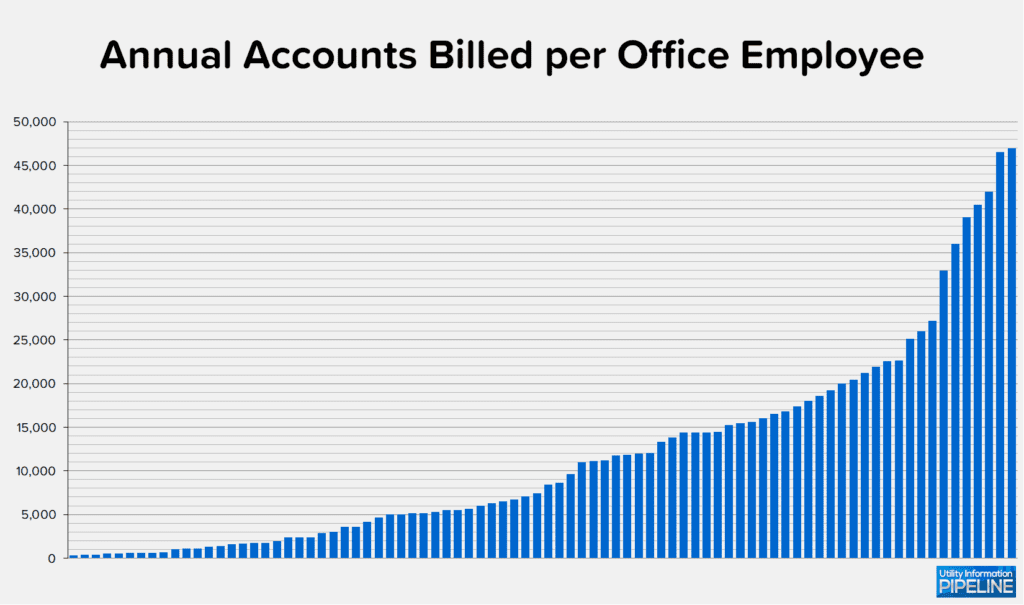
Annual customer turnover
I wondered if the turnover in customers would be a factor in how efficiently offices are staffed, so the survey asked how many applications for service (including routine move in/move outs and new construction) each utility processes per year.
Some utilities billing only property owners, and those will have a much lower turnover rate than utilities billing tenants.
Not surprisingly, the annual turnover rates ranged widely, from .05% to 45.63%. On the low end is a utility in a predominately rural area that only bills property owners. On the high end is a city with a large military installation nearby that bills tenants.
This year, unlike two years ago, there is a slight correlation between annual turnover rates and office efficiency. Of the 15 most efficiently staffed utilities, only four of them have annual turnover rates over 10% and only one of those is over 15%.
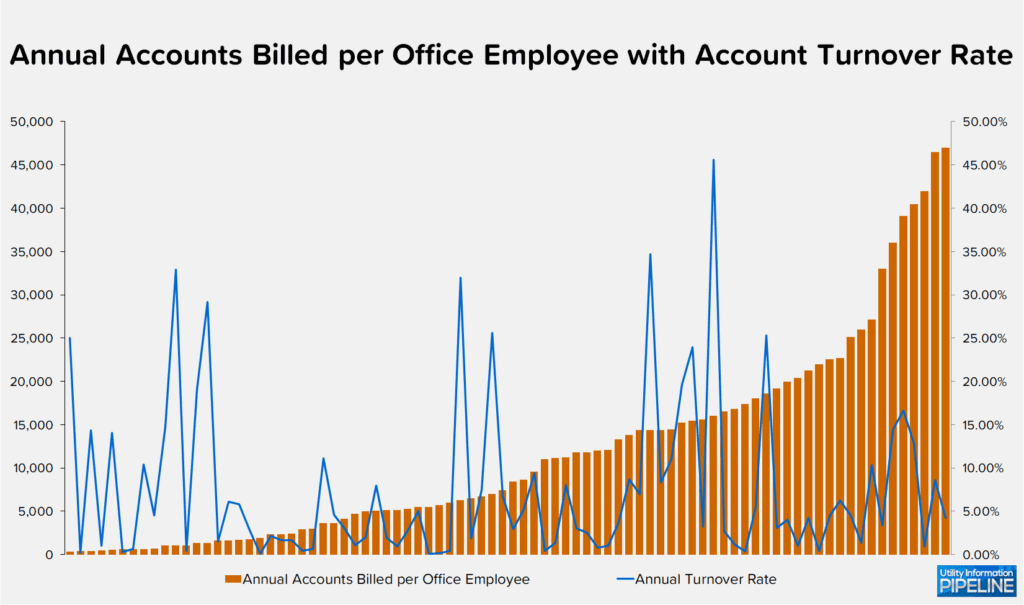
Major services billed
The final variable I examined for this issue was major services billed (water, sewer, electric and natural gas) looking for a correlation between the number of services billed and office staffing. I only considered the major services, because other services, such as garbage, stormwater, or area lights, generally are billed as flat-rate services and are not nearly as labor intensive to bill.
As was the case in 2016, utilities billing multiple metered services require more staff than those billing for only a single metered service. This was even more convincing this year, as 31 of the 32 most efficient offices bill for only one metered service, as shown below. The one anomaly also happens to be one of the utilities mentioned above that doesn’t collect payments.
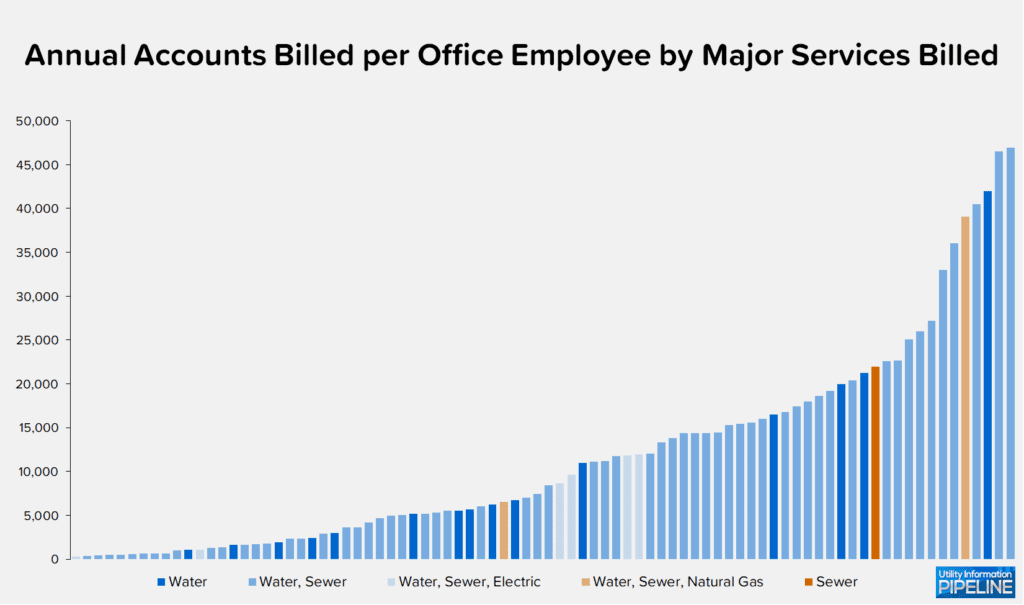
Meter Reading Processing
In terms of office staffing, the real distinction in time savings in only between manually entering readings or importing them from some sort of automated reading process. However, unlike two years ago, this year’s survey did distinguish between whether the imported readings were from handhelds or an AMR or AMI system.
As expected, most utilities in the survey have automated their meter reading process. However, this year’s survey included 16 utilities that still enter meter readings, up from only five two years ago. Surprisingly, three of these utilities were in the upper 50% of most efficiently staffed offices. The others were all within the bottom third of least efficiently staffed offices, as represented by the graph below.
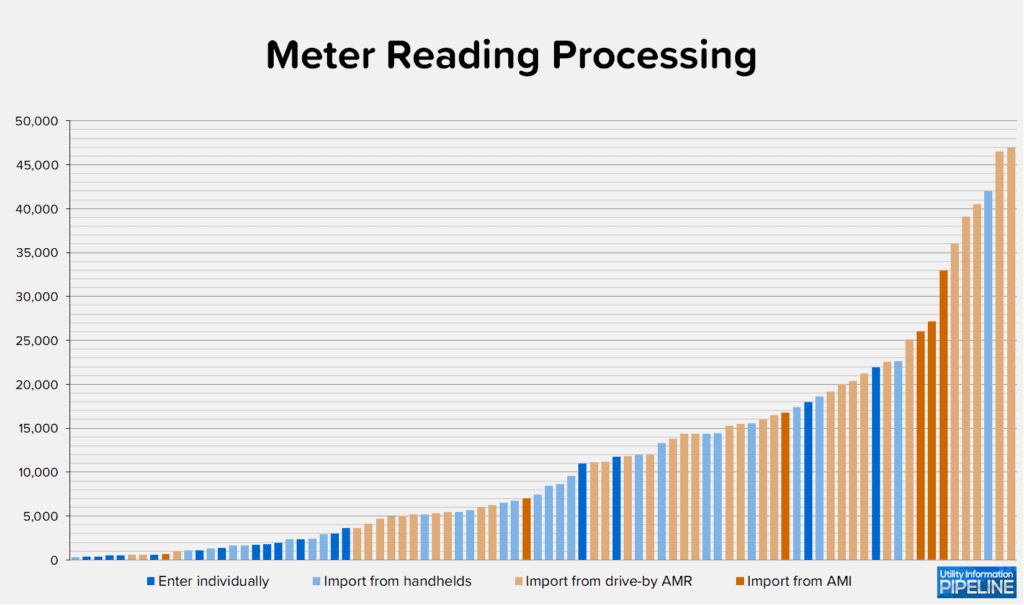
Bill Printing
Bill printing and the related tasks required for preparing bills for mailing – separating postcards or folding and inserting full page bills, sorting, and traying the mail – are very labor intensive tasks.
Not surprisingly, the top three and 27 of the top 32 most efficiently staffed offices use an outsource printer to print their bills. On the other hand, only four of the 15 least efficiently staffed offices outsource their billing printing.
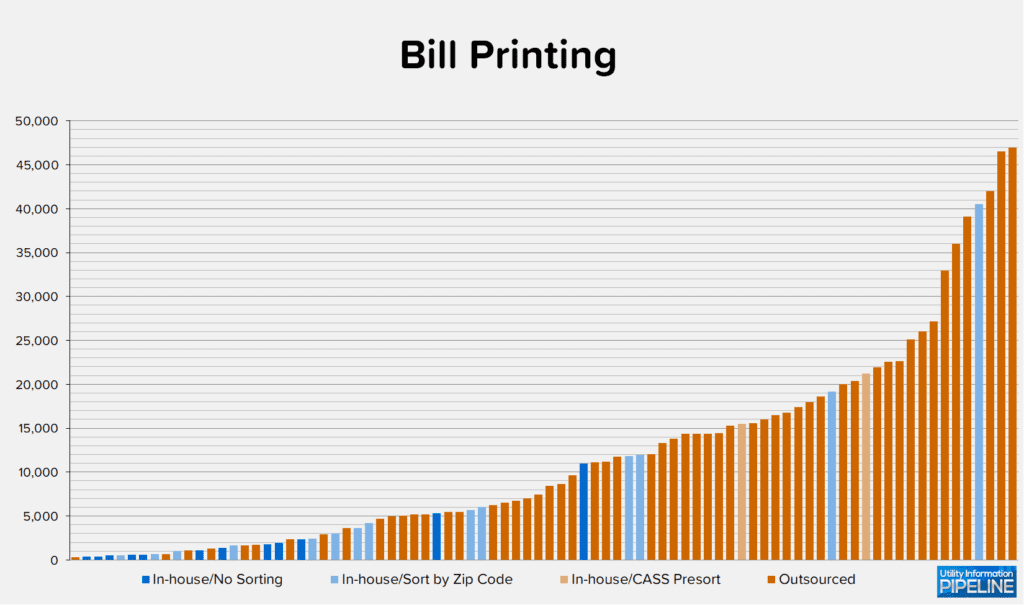
Mail Payment Processing
Mail payment processing is quite possibly the most labor intensive process in most utility offices. For that reason, many utilities have sought to automate the processing of mail payments, either by scanning barcodes on the bill, or using a remittance processing system or a bank lockbox.
As anticipated, 14 of the 15 most efficient utilities automate the mail payment process in some way, while 16 of the 21 least efficient utilities manually enter mail payments.
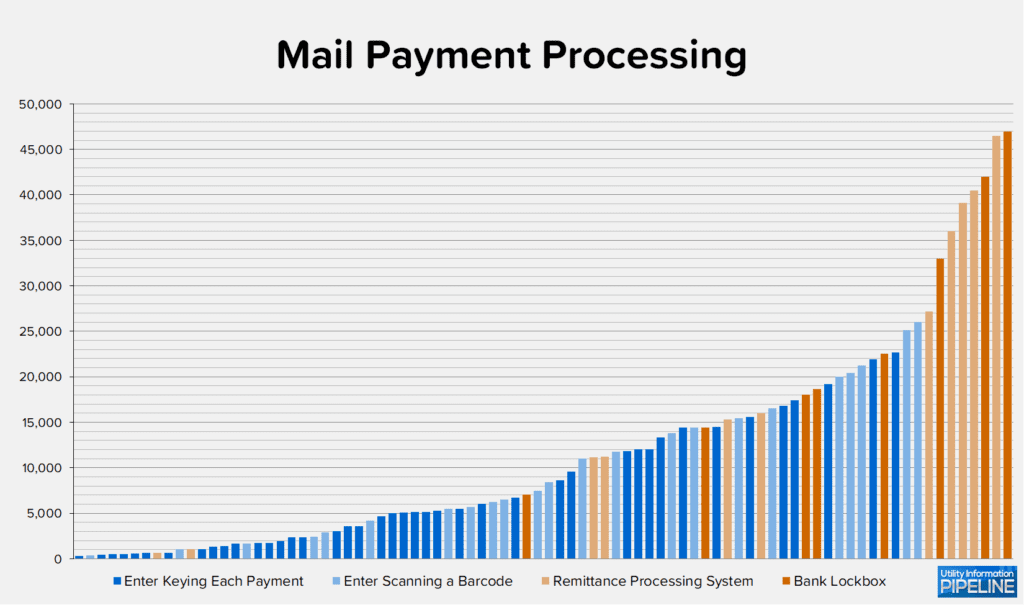
Phone Credit Card Payments
The final area the survey asked about is phone credit card payments. This can be an extremely laborious process considering the customer service representative must look up the account, tell the customer how much is owed, take the credit card number and process the payment authorization and, finally, enter the payment in the system.
Somewhat surprisingly, 5 of the 19 most efficiently staffed offices have a person in the office take phone credit card payments.
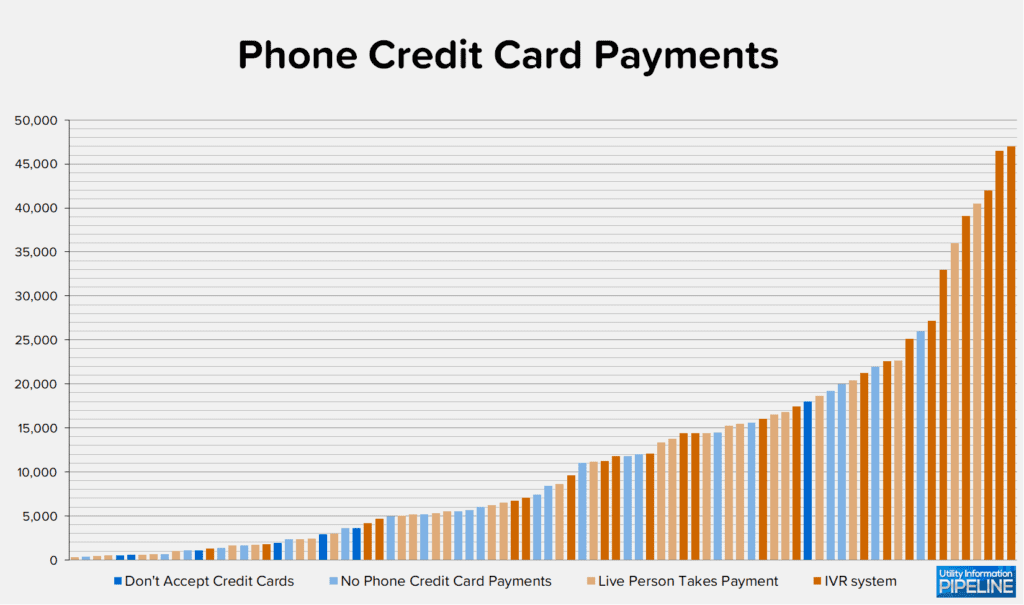
Is your office adequately staffed?
If you think your utility is understaffed or could operate more efficiently, please give me a call at 919-673-4050 or e-mail me at gary@utilityinformationpipeline.com to learn how a business review could help you determine this.